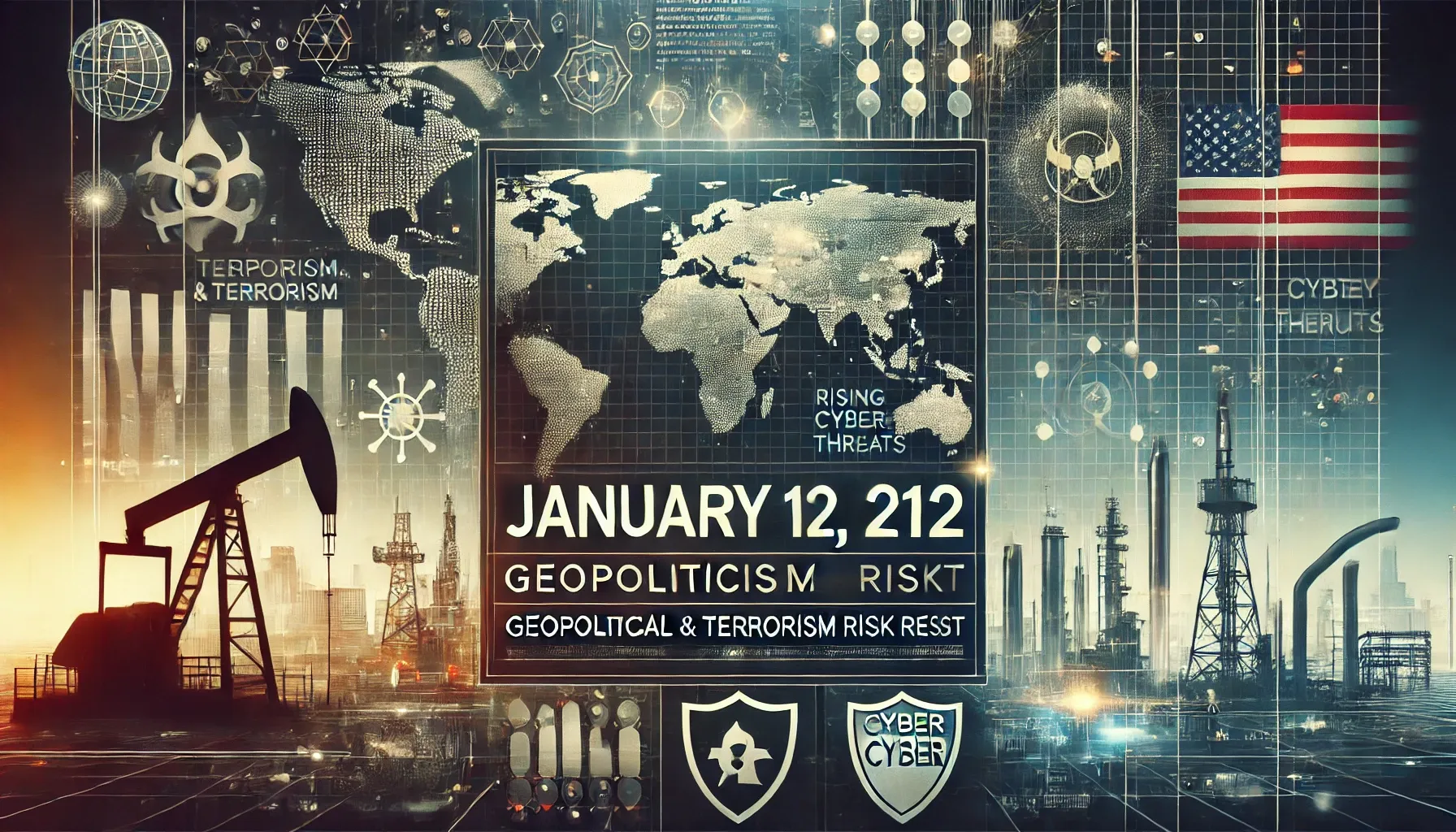Prime Rogue Daily Risk Report: January 12, 2025
Executive Summary
As of January 12, 2025, global dynamics are influenced by rising oil prices due to geopolitical tensions, persistent terrorist threats exemplified by recent attacks in the United States, and significant political transitions. Stakeholders must navigate these complexities to safeguard interests and maintain stability.
1. Geopolitical Developments
- Oil Price Surge Amid Geopolitical Tensions:
- Oil prices have surged to levels last seen in October, driven by potential new U.S. sanctions on Russia. Brent crude futures rose to approximately $80, marking a 4% increase. The sanctions are expected to target vessels, traders, and major oil companies, raising concerns about supply disruptions.
- Global Security Outlook for 2025:
- Analysts predict that 2025 will be a defining year for global security, with heightened risks of terrorism, potential strains in international alliances, and challenges posed by state and non-state actors. The ongoing war in Ukraine and tensions in the Middle East are expected to significantly influence global stability.
2. Recent Terrorist Incidents
- New Orleans Attack:
- On January 1, 2025, a terrorist attack in New Orleans resulted in 14 fatalities. The assailant used a pickup truck to ram into a crowd, followed by an explosion. The FBI is investigating the incident as an act of terrorism.
- Las Vegas Incident:
- A subsequent attack occurred in Las Vegas, involving the explosion of a Tesla Cybertruck near a prominent hotel. While the exact motives remain under investigation, the choice of venue suggests a potential political message. RAND Research Services
3. Predictive Analysis
Potential Targets:
- Energy Infrastructure:
- Locations: Oil refineries, pipelines, and storage facilities, particularly in regions affected by sanctions.
- Rationale: Geopolitical tensions and sanctions may prompt retaliatory actions against energy infrastructure to disrupt supply chains.
- Transportation Hubs:
- Locations: Major airports, seaports, and railway stations in urban centers.
- Rationale: Recent attacks highlight the vulnerability of transportation hubs to acts of terrorism aimed at causing mass casualties and economic disruption.
- Public Events:
- Locations: Large gatherings such as political rallies, concerts, and sporting events.
- Rationale: High-profile events present attractive targets for terrorists seeking to maximize visibility and impact.
Likely Attack Types:
- Vehicle Ramming Attacks:
- Targets: Pedestrian zones, outdoor markets, and public gatherings.
- Details: The simplicity and effectiveness of vehicle ramming make it a persistent threat, as demonstrated by recent incidents.
- Improvised Explosive Devices (IEDs):
- Targets: Crowded public spaces and critical infrastructure.
- Details: The use of IEDs remains a common tactic among terrorists to inflict mass casualties and instill fear.
- Cyberattacks:
- Targets: Financial institutions, government agencies, and critical infrastructure.
- Details: Geopolitical tensions may lead to an increase in cyber operations aimed at disrupting services and stealing sensitive information.
High-Risk Regions:
- Eastern Europe:
- Key Areas: Ukraine and neighboring countries.
- Risks: Ongoing conflicts and political instability may lead to increased terrorist activities and cross-border tensions.
- Middle East:
- Key Areas: Iran, Israel, and surrounding regions.
- Risks: Tensions over nuclear capabilities and regional rivalries could escalate into open conflict, with global repercussions.
- United States:
- Key Cities: New Orleans, Las Vegas, and other major urban centers.
- Risks: Recent attacks indicate a heightened threat level, necessitating increased vigilance and security measures.
4. Implications for Stakeholders
- Energy Sector:
- Risk Management: Assess and mitigate risks associated with potential supply disruptions due to geopolitical tensions and sanctions.
- Security Enhancements: Strengthen physical and cyber security measures to protect infrastructure from potential attacks.
- Government Agencies:
- Intelligence Gathering: Enhance monitoring of emerging threats, particularly those related to geopolitical developments and domestic terrorism.
- Public Communication: Provide timely advisories and guidance to citizens and businesses regarding potential risks and safety measures.
- General Public:
- Vigilance: Stay informed about local and international developments that may impact personal safety and security.
- Preparedness: Follow official advisories, participate in community preparedness initiatives, and report suspicious activities to authorities.
Conclusion
The geopolitical and security landscape as of January 12, 2025, presents complex challenges requiring coordinated efforts from all stakeholders. Proactive risk assessment and the implementation of robust security measures are essential to navigate this volatile environment effectively.
